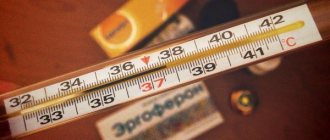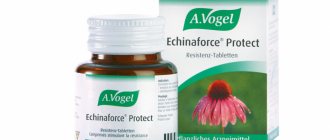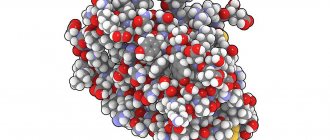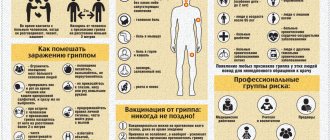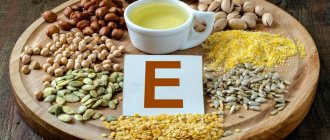Prevention of influenza, ARVI and coronavirus is a single set of measures aimed at preventing morbidity. The words of Hippocrates are relevant today: “It is easier to prevent a disease than to treat it.” Compliance with preventive measures helps protect against infection, reduce the risk of large-scale spread of infection, and save people’s lives.
With the advent of the pandemic, the whole world has felt the importance of preventing respiratory infections. COVID-19 has forced humanity to take a fresh look at ways to stay healthy. On a par with coronavirus infection are influenza and ARVI, which people encounter in the fall and spring. As practice shows, seasonal diseases sometimes cause complications no less severe than Covid. Prevention of influenza and ARVI, developed by epidemiologists, helps protect against infection and its consequences. Read about the characteristics of respiratory viruses, means and methods of protection against infection in our article.
Ways to get a respiratory infection
Respiratory viruses are a large family of ultramicroscopic intracellular parasites. Some of them become noticeably more active during the demi-season, causing epidemics of ARVI (acute respiratory viral infection). These are paramyxoviruses, picornaviruses, adenoviruses, coronaviruses, parainfluenza viruses, influenza A, B, C.
Pathogens of infectious respiratory diseases are highly contagious (infectious), but they can only enter the body through the mucous membranes of the respiratory tract. The main method of infection is aerogenic or airborne droplets. Viral particles fly through the air with droplets of liquid that escape from the mouth of a sick person when sneezing or coughing. The second method of infection is through household contact. The direct route is through a handshake with a carrier of the infection, the indirect route is through contaminated (infected) surfaces. Having picked up the virus in your hands, it is easy to carry it into your nose, your mouth is the “entrance gate” of ARVI.
Features of infection and symptoms
Most often, the development of acute respiratory infections occurs against the background of infection with viruses or bacteria. The infection is transmitted by airborne droplets or by contact when in public places or when personal hygiene rules are not observed. Once on the mucous membranes of the respiratory system, pathogens multiply and cause unpleasant symptoms against a background of general malaise.
Pronounced signs of acute respiratory infections usually appear a couple of days after infection. This:
- A sore throat.
- Sneezing.
- Headache.
- Loss of appetite.
- Runny or stuffy nose.
Treatment should begin when the first symptoms appear. ARI at the initial stage of development can be successfully treated with modern medications. Otherwise, the intensity of the symptoms will increase, in addition, the body temperature will rise, fever will occur, and the lymph nodes will enlarge, which will lead to a deterioration in the general condition. Against this background, there are risks of developing complications and the need for treatment in a hospital setting.
Means for the prevention of acute respiratory viral infections and influenza
Preventive measures against acute respiratory infections are divided into specific and nonspecific. Specific prevention is vaccination. The Russian Federation is immunizing the population against influenza and coronavirus. There is no vaccine for other viruses, of which medical virology numbers more than two hundred. Non-specific methods include drug protection of the body, home remedies to strengthen the immune system, rules for the prevention of influenza and ARVI, recommended by WHO.
Nonspecific prevention
To prevent influenza and ARVI, two types of pharmacological drugs have been developed:
• Direct acting drugs. They block enzymes on the surface of the virus. Because of this, the infectious agent loses the ability to reproduce its RNA and proteins. • Agents that stimulate the production of protective interferons to increase the body's resistance to infections.
Antiviral medications are available in the form of tablets, capsules, and powders. For children, there are syrups, suspensions, and drops that are convenient to take.
The TOP 5 drugs include:
• Arbidol. Active against most pathogens of acute respiratory viral infections, including influenza viruses. For prevention, take twice a week, for treatment - 4 times a day. In powder form it is allowed for children from 2 years old, in tablet form - from 6 years old. • Ergoferon. A fast-acting immunomodulator with proven effectiveness against respiratory viruses. Tablets for sublingual administration are prescribed: 5 pcs per day. within 2 hours, on subsequent days - 1 pc. three times. • Ingavirin. An innovative antiviral agent with high anti-inflammatory activity. Used for all types of acute respiratory viral infections, including coronavirus infection. In pediatrics it is used from 7 years of age. To achieve results, 1 capsule per day is enough. • Kagocel. A powerful immunostimulant, it causes the synthesis of interferons by all cells of the body that participate in the antiviral response. Allowed for children from 3 years old. Prevention is carried out in cycles: 2 days, 2 tablets - 5 days break - 2 days, 2 tablets. • Anaferon. Increases the production of interferon, prescribed for the prevention and treatment of acute respiratory viral infections. In pediatrics, a specially developed children's version of the drug is used.
Unlike antibiotics, antivirals are sold without a doctor's prescription.
Organization of home prevention of ARVI and influenza includes:
• Nutrition correction. Foods high in ascorbic acid—vegetables, wild berries, fruits, herbs—help stimulate the formation of interferon. Protein is the building material for immune cells, so the diet should contain a sufficient amount of meat, fish, dairy products, and cereals (millet, oats, buckwheat). The main helper of immunity is vitamin D. It is found in egg yolk, seaweed, and cod liver. • Hardening, physical activity. It is recommended to start hardening procedures in the summer - before the start of seasonal epidemics. Sports activities saturate the blood with oxygen, accelerate hemodynamics, and increase blood supply to organs. This allows you to maintain the functionality of immune system cells to produce interferons.
• Use of folk remedies. Products with antimicrobial effects (garlic, ginger, onions), as well as plants with immunostimulating properties (ginseng root, rose hips, echinacea, sage, lemon balm) help protect against seasonal diseases.
To prevent illness, it is important to adhere to a rational work and rest regime. Doctors recommend getting enough sleep, walking daily, avoiding conflict situations that lead to stress, and taking vitamin and mineral supplements.
University
→ Home → University → University in the media → Pills or bed rest? How to treat colds and flu
Clinical pharmacologist with half a century of experience, Professor Mikhail Kevra recommends not to get carried away with medications for seasonal respiratory infections.
The specialist expressed concern about the growing drug addiction among the population and doctors, and also commented on several myths regarding methods of prevention and treatment of colds and flu. The medicine was created, but the virus has changed
— Mikhail Konstantinovich, during the cold season, people actively buy “anti-cold” pills, that is, antiviral pills that are sold without a doctor’s prescription. A typical request to a pharmacy worker is to advise the best. And judging by the advertising, all the drugs are “powerful and work flawlessly.” As a specialist who has spent his entire life studying the effects of medications on the human body, what do you recommend?
- Today not a single name will come out of my mouth. And not only because of the reluctance to support the commercial interests of producers. The fact is that most of the existing so-called. Antiviral drugs only alleviate the symptoms of the disease, but do not have a detrimental effect on the virus itself. Unfortunately, recently created drugs that inhibit the reproduction of viruses are rapidly losing their effectiveness.
This is primarily due to the rapid variability of the antigenic structure of the virus. For example, it has been established that the influenza virus, under the influence of various environmental factors, can change dramatically within 6–10 months and become resistant to those medications that were recently effective. It is impossible to develop a new drug in such a period of time, and the virus will become different again... And this process is endless.
Lie down - and no work!
—So you want to say that if a cold is treated, it will go away in 7 days, but if not, then you will be sick for a week? — The body itself fights the pathogen of ARI. He needs help. The first thing to do is to ensure complete rest (especially in the first three days of the disease). Previously, in clinical guidelines for the treatment of respiratory infections, the first point was to prescribe bed rest, and only then medications. Why? Because the virus greatly weakens the body, and if a person continues to lead a normal lifestyle or, even worse, exposes himself to increased stress, then there is simply no strength left to fight the pathogen. The weaker the immune system, the more actively pathogenic viruses cling and the more opportunistic flora multiplies. Today, unfortunately, the emphasis in treatment has shifted to the use of drugs. The sick person takes pills and continues to go to work. What does this lead to? To a protracted course and the occurrence of complications. In time pressure, it is very difficult to overcome the pathogen. The second important condition for the fight against the virus is plenty of warming drinks (tea with lemon, honey, raspberries, milk with honey, herbal tea). Toxins produced by the pathogen are removed with the liquid. — To hear such recommendations from a clinical pharmacologist, frankly speaking, is unexpected... — There is a pharmacomania in society: many cannot imagine recovery without pills, injections and droppers. And doctors to whom the patient “indicates” that he was prescribed few medications or the wrong ones that help, is easy to understand: sometimes specialists prescribe the required medications under moral pressure, fearing conflicts and complaints. To some extent, they are right: if a person believes that such a drug is effective, a placebo will help him recover. But this has nothing to do with the real effectiveness of the medicine. We must understand that the body perceives any chemical as foreign and hostile. The first reaction of the cells that meet it is protest and fight. It turns out that instead of conserving the strength the body needs to suppress and destroy the pathogen, we force our body to spend it on adapting to the drugs. A comparative study was conducted in the UK: some patients with a respiratory viral infection were treated with antiviral drugs, while others were treated with hot chicken broth with spices. In the group of those who did not take chemicals, the results were better. This was explained not only by the warming effect of the liquid, but also by the presence of extractive substances in the broth that help the body cope with the infection. — Is drug prophylaxis possible for ARI? One of the medications, according to the instructions, can be taken to prevent infection. “It is very difficult to stop the spread of the virus using the drug. I consider regular hand and face washing a much more realistic option. Most often, we get the virus not through inhaled air, but through our hands. He scratched his nose, rubbed his eyes - and the pathogen penetrated the mucous membrane. When coming from the street, after communicating with a sick person, you should immediately wash your hands - and the risk will decrease. But life shows that pharmacologists cannot be convinced of this! Since ancient times, people have used plants containing phytoncides (garlic, onion) to prevent viral infections. — It is not uncommon for people with ARI to prevent complications to take antibiotics like amoxicillin, which can be bought without a prescription... — If complications have not developed, there is no inflammation caused by bacteria, then what is the antimicrobial drug aimed at destroying? To other flora, including microorganisms that are beneficial in the fight against disease. In addition to pathogens, so-called pathogens live on mucous membranes. saprophytic microorganisms that do not themselves cause disease, but help fight the virus. If they are destroyed, the virus has an additional opportunity to survive. The immune system, which has already survived the blow, weakens even more. The use of antibiotics “for prevention” leads to the fact that microbes become increasingly resistant to antimicrobial drugs. Is there any benefit from immunomodulators - The conclusion suggests itself: it is necessary to support the immune system. There are many drugs that stimulate it... - The best immunity against acute respiratory infection is developed in the body after a person has had it. Therefore, in children and young people, the flu is more “brighter” and more often causes complications, because their immune system has less experience in fighting it. But since there are so many pathogens of ARVI, a person gets sick again and again. The second most effective means is vaccination: a weakened pathogen or its antigenic determinants are specially introduced into the body, thereby “warming up” the production of antibodies. The effect of drugs that are positioned as immunostimulants and immunomodulators is questionable. Clinical trials conducted on small groups of people are not proof! In the West, drugs that supposedly stimulate the activity of the immune system are not prescribed because most insurance companies do not pay for such therapy, not seeing any real benefit from it. There is also an assumption that stimulating the production of lymphocytes and other protective cells can simultaneously activate the growth of cancer cells.
Super-persistent myths about vitamins
— What can you say about the advisability of vitamin support for ARI, primarily ascorbic acid? Many are sure that this promotes a speedy recovery and strengthens defenses.
— If there are not enough vitamins in the blood (the deficiency is confirmed by laboratory tests), then replenishment will have a positive effect. But with the same success, other essential substances - amino acids, sodium, calcium and other microelements - will “stimulate” the immune system!
The use of large doses of vitamin C (up to 3 g per day) to prevent colds was proposed by the famous chemist, two-time Nobel Prize winner Linus Carl Pauling.
First impressions of this use of ascorbic acid were optimistic. However, in more in-depth studies based on a double-blind control method (when neither the patient nor the doctor knows which drug is being used), it turned out that the frequency of colds under the influence of high doses of ascorbic acid does not decrease. And yet, there is still an opinion among the population about the miraculous properties of vitamin C. Unfortunately, such advice can also be found in the media.
Many clinical studies back in the 1970s convincingly proved that the administration of high doses of ascorbic acid to people with normal levels of it in the body does not reduce the incidence and severity of colds in either adults or children.
It should be noted, however, that there are situations with ARI when high doses of vitamins really help. For example, with influenza, scarlet fever, measles with hemorrhagic manifestations. In this case, they help strengthen the walls of capillaries.
Vitamins are essential organic substances. They must be constantly supplied with food, since the human body cannot store them for future use. But few are needed.
Vitamins created artificially are chemical substances with pronounced pharmacological activity. In therapeutic doses (which are 2-3 times higher than preventive doses), vitamin C can cause disruption of capillary permeability, which impairs the nutrition of organs and tissues. You need to be careful when prescribing these drugs to pregnant women and those who are planning to conceive: unreasonable use is fraught with disruptions in the course of pregnancy and even threatens the death of the embryo.
— Mothers and pediatricians really like to turn to vitamins... Are they wrong too?
- The child is lethargic and tired - they start feeding him “to raise his tone”, not knowing the level of these substances in the blood. Meanwhile, the child is overloaded at school and in clubs; he simply wants to relax and be in the fresh air. Synthetic substances will not compensate for this deficiency, but they can cause health problems.
It has been established that long-term intake of vitamin C in high doses (for preschoolers and primary school students this is 100-200 mg per day, i.e. 2-4 tablets of ascorbic acid with glucose) can lead to a decrease in the number of red blood cells and hemoglobin in the blood, an increase leukocyte content and a decrease in the number of lymphocytes. Even a single dose of ascorbic acid can provoke tachycardia (an increase in the number of heartbeats per minute), and a long-term dose can disrupt the nutrition of the heart muscle, which is easily determined by an electrocardiogram.
— At the end of winter, many of us are accustomed to buying vitamin complexes...
— Seasonal fluctuations in the content of vitamins in the blood are the norm, not a pathology. In summer and autumn, the level of vitamins in the blood will certainly increase even without taking complexes, and in winter and spring it will decrease.
Vitamins have been known to mankind for about 100 years, but they learned to obtain them artificially a little over 50 years ago. But summer and autumn, winter and spring have always existed, and with them seasonal fluctuations in the content of vitamins in the body. These are normal natural biorhythms that should not be interfered with. It wouldn’t even occur to anyone to “even out” the level of sex hormones during a woman’s monthly cycle!
If you really need to nourish the body, it is better by eating fresh fruits, vegetables and other foods that contain vitamins. It is almost impossible to create hypervitaminosis through regular food, but it is easy to create with the help of artificially created substances. Elena Kleshchenok Medical Bulletin , January 26, 2017
Share
Flu and its dangers
Besides coronavirus, the most dangerous causative agent of acute infections is the influenza virus. It differs from its respiratory “relatives” in its high virulence - its ability to quickly spread throughout the body, causing severe complications - even lethality. The risk group includes people of advanced age, young children, patients with chronic cardiac and pulmonary pathologies.
The influenza virus provokes infectious and inflammatory diseases of the heart, nervous system, and brain. With a heavy viral load, intoxication quickly develops, the permeability of the vascular walls increases, hemodynamics are disrupted, the lungs lose their ability to absorb oxygen, and respiratory failure occurs, which can be fatal. The most effective prevention of influenza is the introduction of an influenza vaccine before the start of the epidemic season. Children are vaccinated from 6 months of age.
Vitamins to strengthen the immune system
Special blood tests help determine which vitamins the body lacks. The main marker of stable immune function is considered to be normal levels of vitamin D hormone. It enters the body with food and is synthesized by skin cells under the influence of sunlight. Considering the deficiency of ultraviolet radiation in most Russian regions, it is recommended to take the vitamin hormone in the form of a dietary supplement. To prevent respiratory diseases, the immune system needs B vitamins, ascorbic acid, and fat-soluble vitamins A and E.
Products that contain vitamins for the prevention of ARVI and influenza
Ascorbic acid (vitamin C):
- sauerkraut
- bell pepper
- citrus
- cranberry
- currant
- rose hip
Group B:
- nuts
- milk
- legumes
- buckwheat
- oats
- tomatoes
Tocopherol (E):
- sea buckthorn
- spinach
- broccoli
- bran
- eggs
- vegetable oils
Retinol (A):
- carrot
- green onions
- parsley
- peaches
- apricots
- melon
Replenishing vitamin reserves through nutrition alone is an impossible task. To maintain the immune system in a state of combat readiness, an additional source is needed - pharmacy vitamin complexes:
• Supradin Immuno Forte; • Doctor More; • Multi-tabs Immuno Plus; • Pediakid syrup; • Superum Echinacea Vitamin C Complex.
The most modern and effective means for strengthening the immune system can be ordered with home delivery.
What to do if you get sick?
Fever, weakness, soreness, lacrimation are early signs of infection. When they appear, it is not recommended to leave the house. Firstly, so as not to spread viruses, and secondly, so as not to worsen your health. You can call a therapist or pediatrician by phone. In case of extreme temperatures, it is better to call an ambulance. Before the doctor arrives, the sick person must be put to bed and given warm tea (fruit juice). It is advisable to put a medical mask on the patient, provide him with a separate room, dishes, and hygiene items. To prevent complications, it is important to follow medical prescriptions - take medications, drink plenty of fluids, ventilate the room, eat foods rich in vitamins, phytoncides, and protein. In the first days of illness it is necessary to observe bed rest. If you have the flu, physical activity can trigger the development of acute respiratory distress syndrome, an extremely life-threatening condition.
How to figure out what kind of runny nose you have
The first distinguishing feature is the color of the snot. If a green or green-yellow tint appears, it means that the nature of the runny nose is most likely bacterial. However, to determine whether a runny nose is viral or bacterial, you need to pay attention not only to the color of nasal discharge, but also to other symptoms.
If a person’s health worsens, the temperature rises to high levels, the disease continues to progress and does not go away after 10 days or more, it is necessary to consult a doctor. The specialist will prescribe a general blood test, rhinoscopy, and laboratory testing of a smear from the nasal canals.
